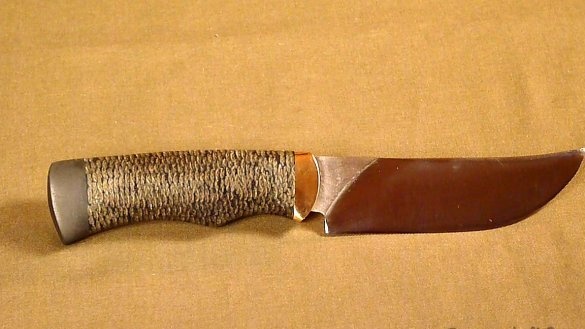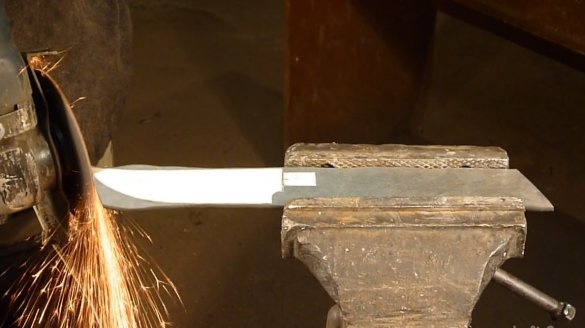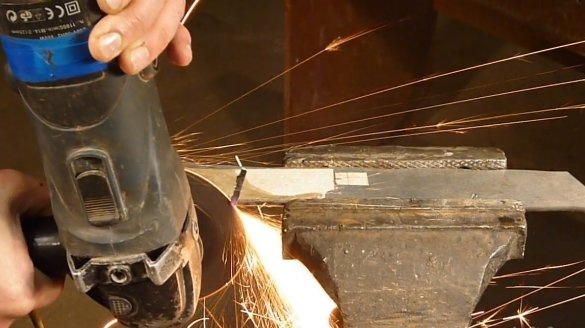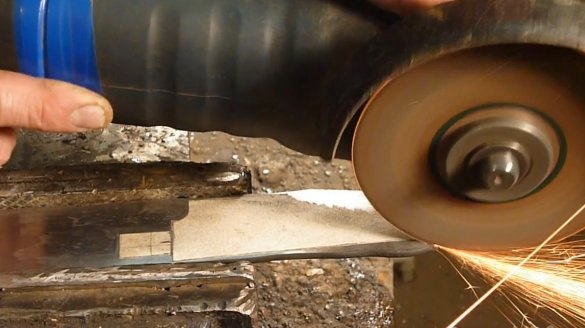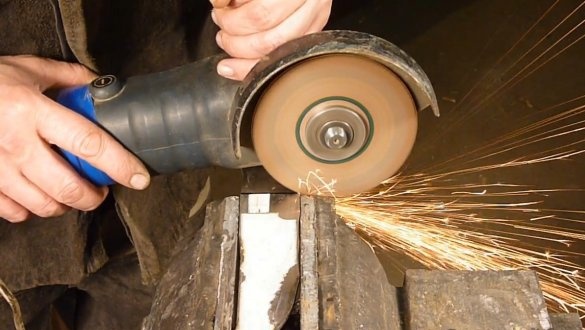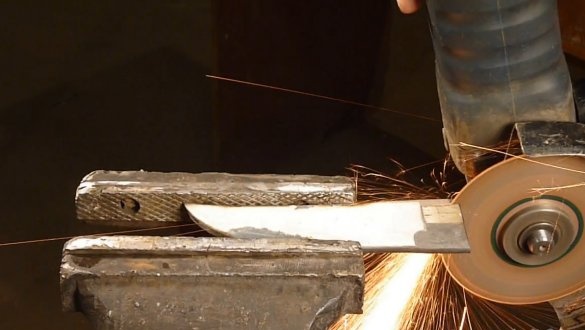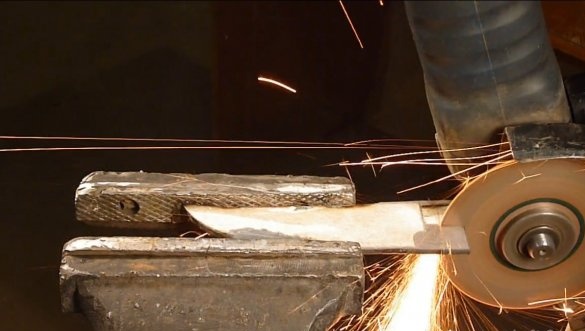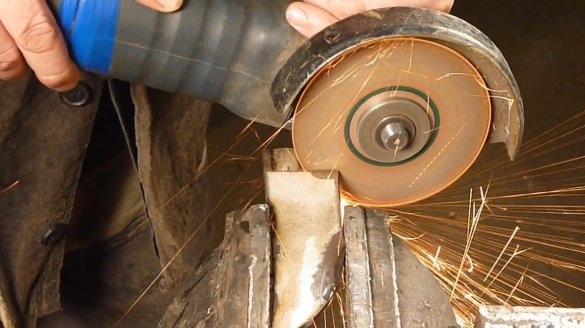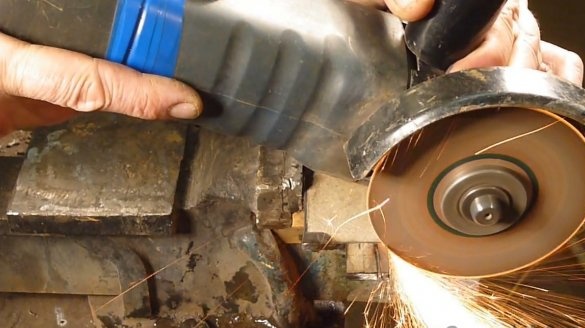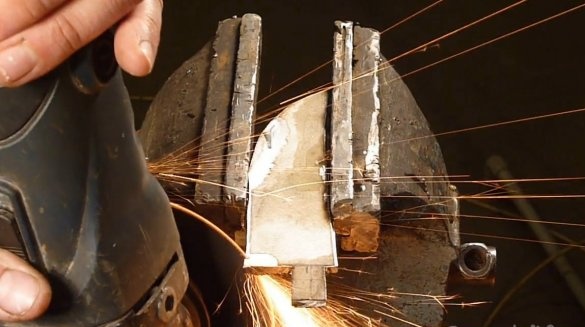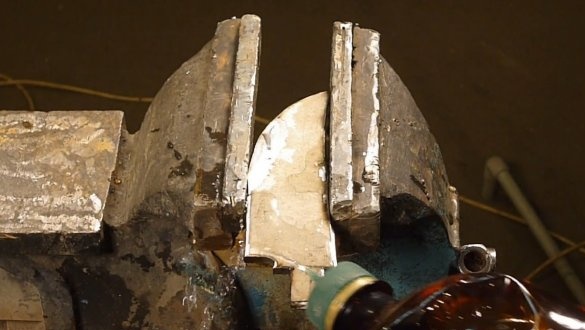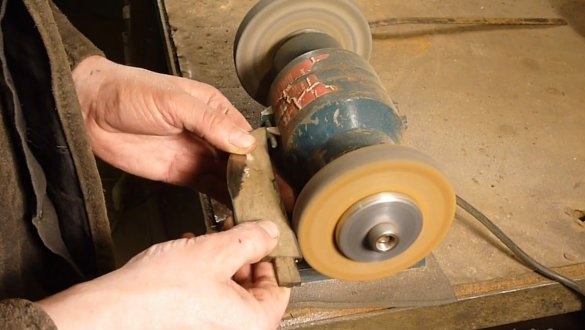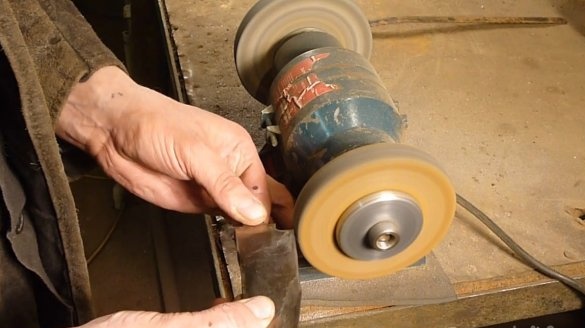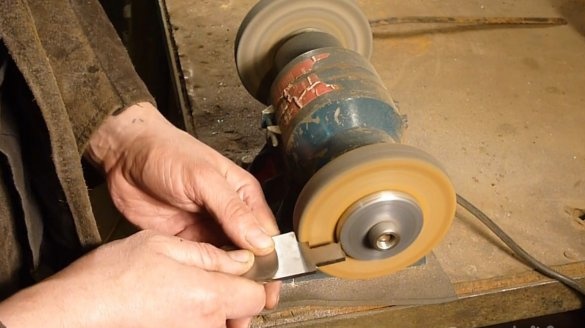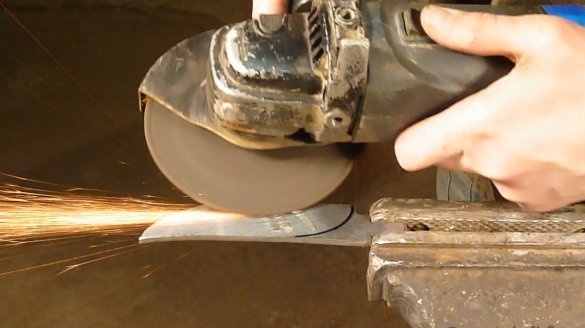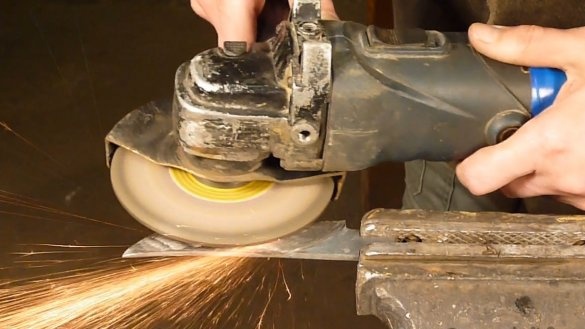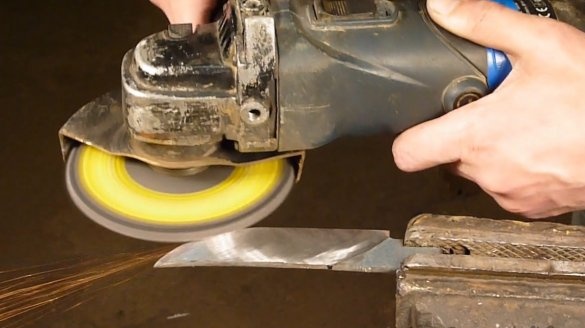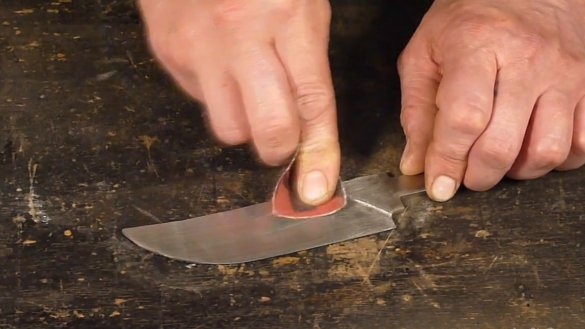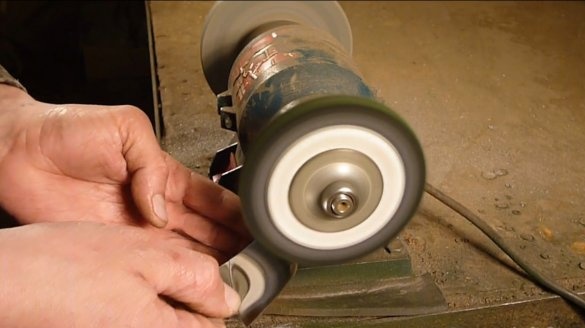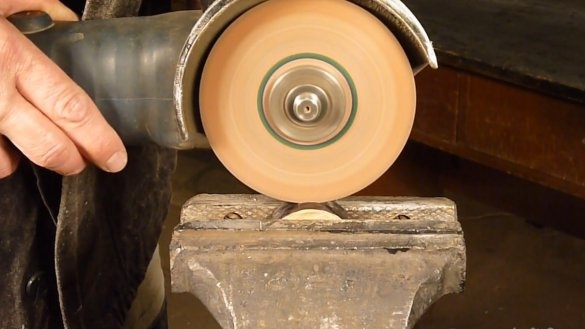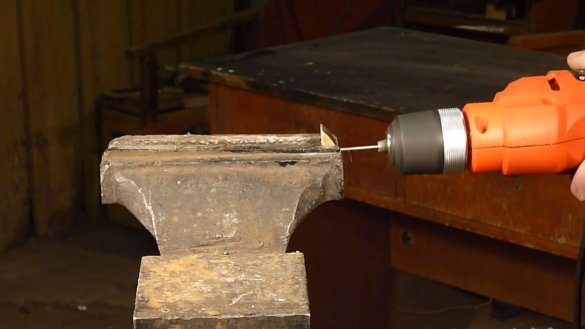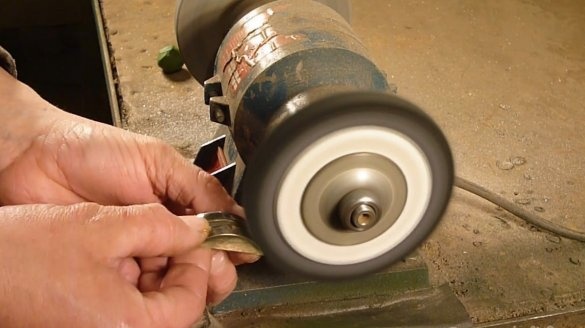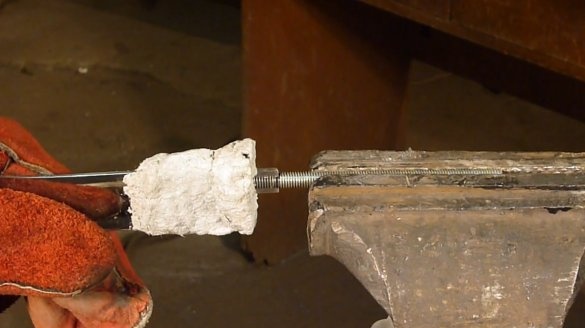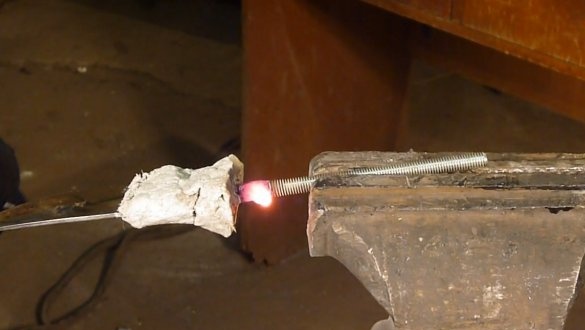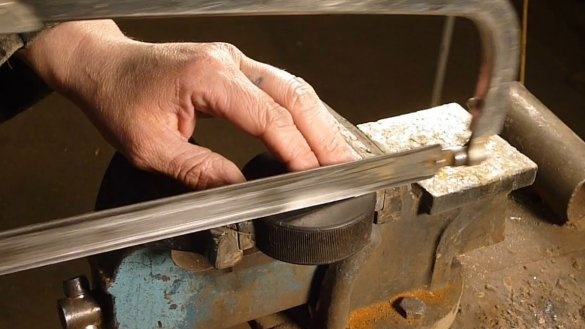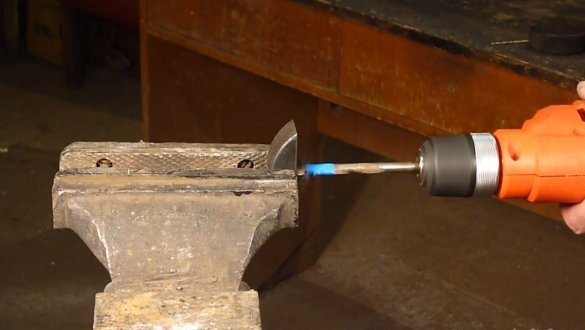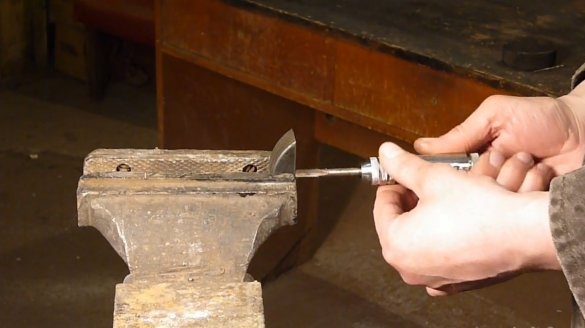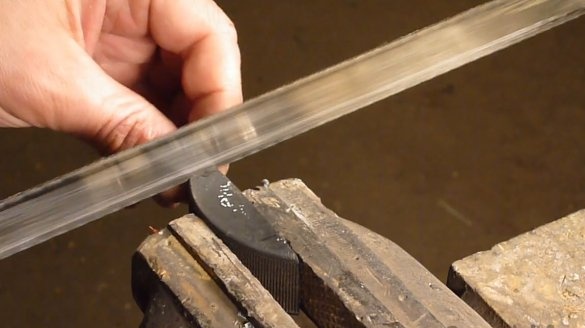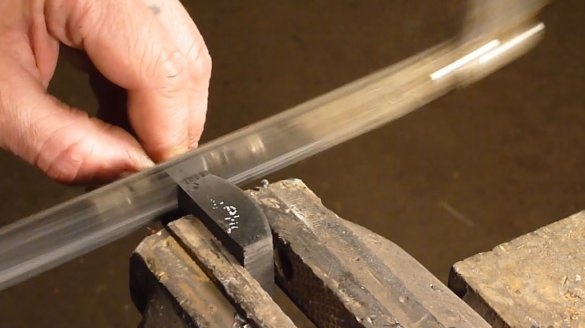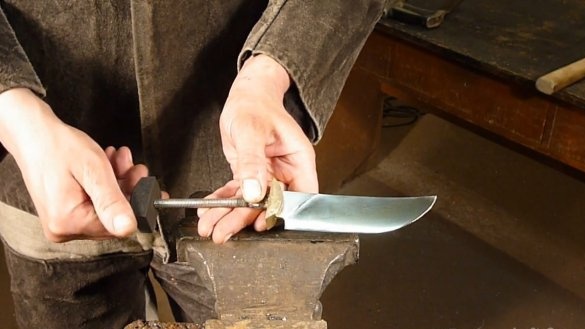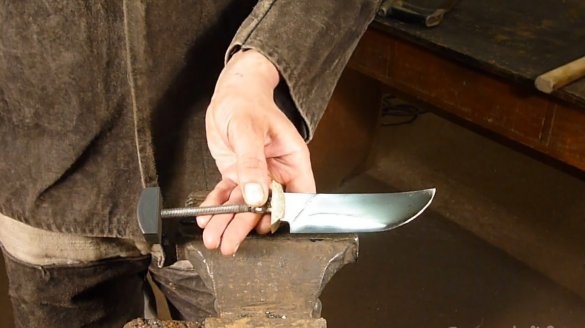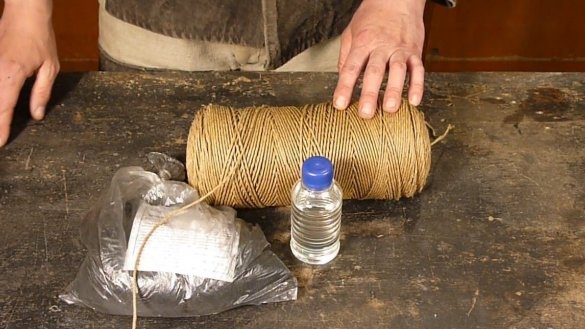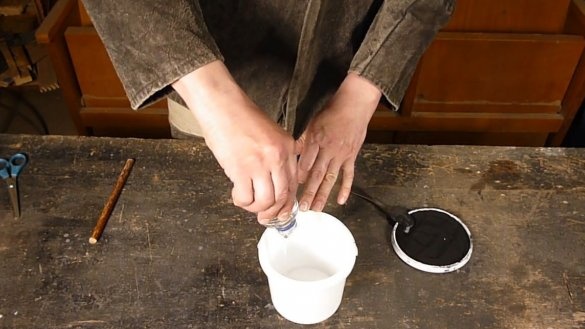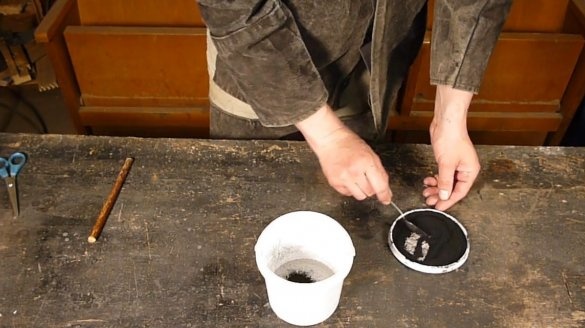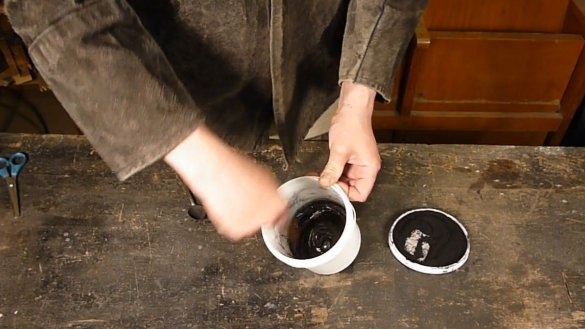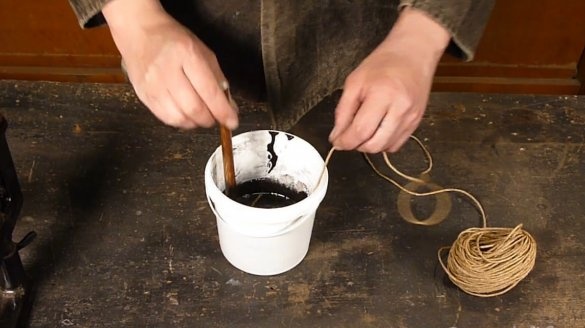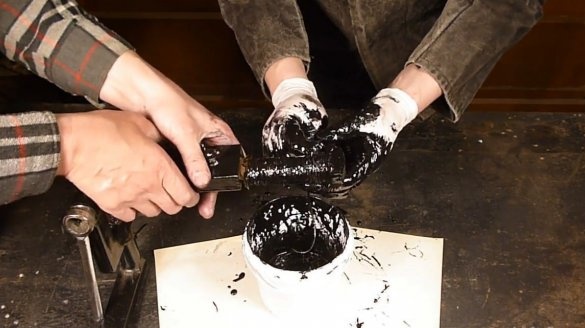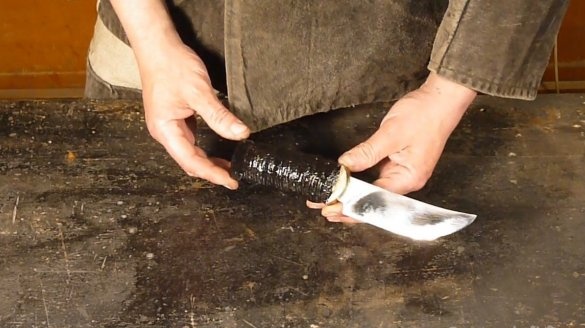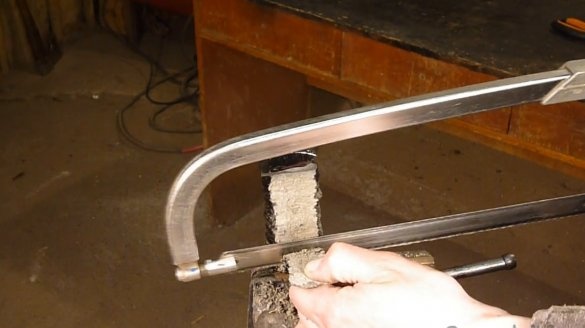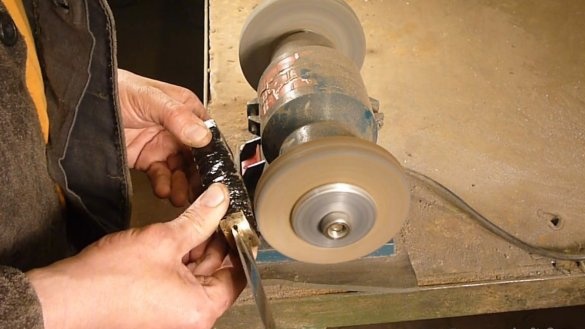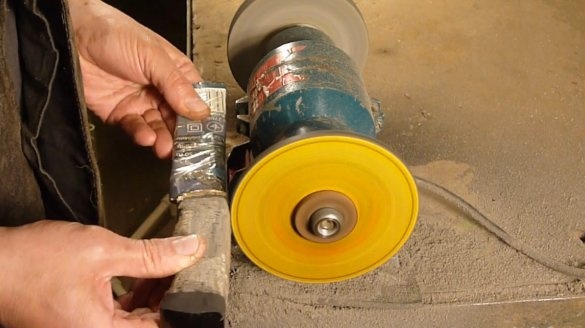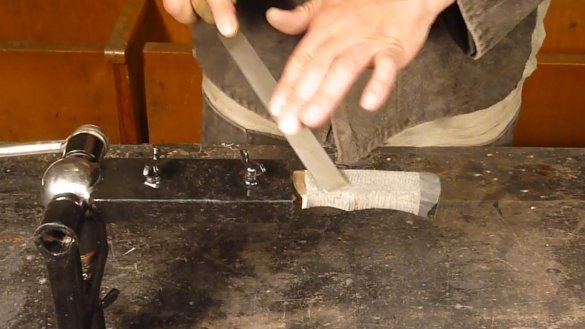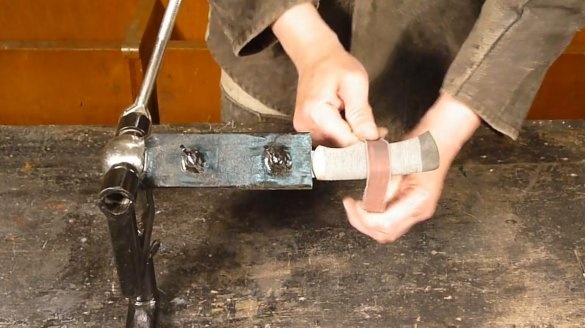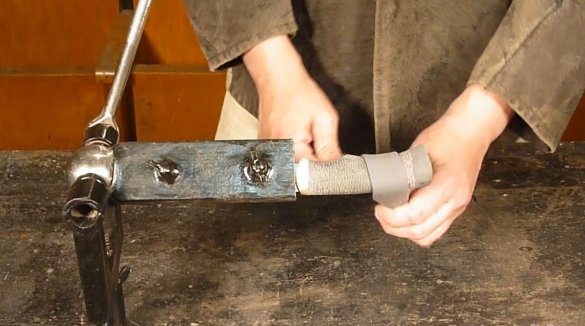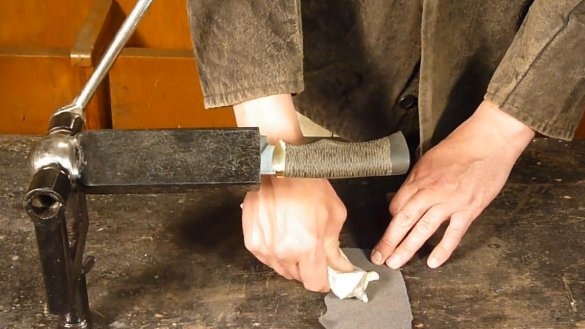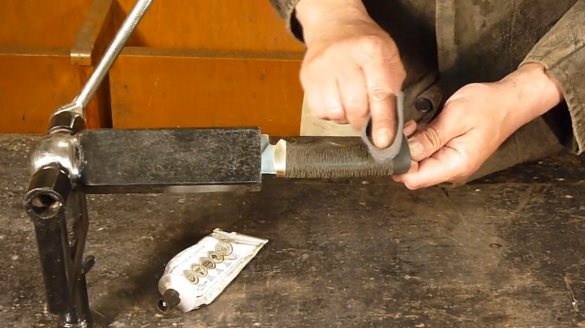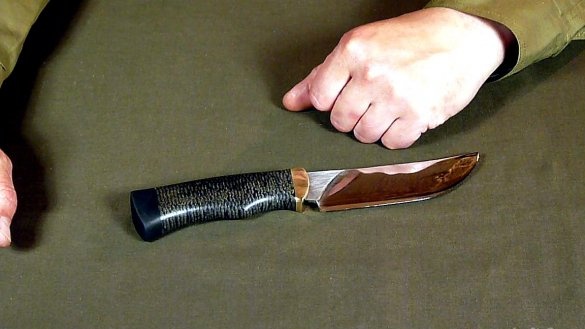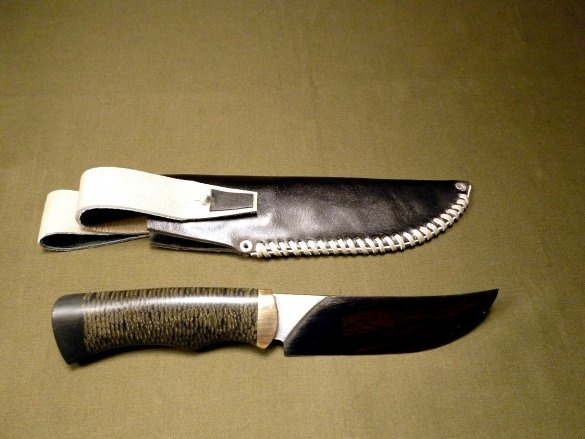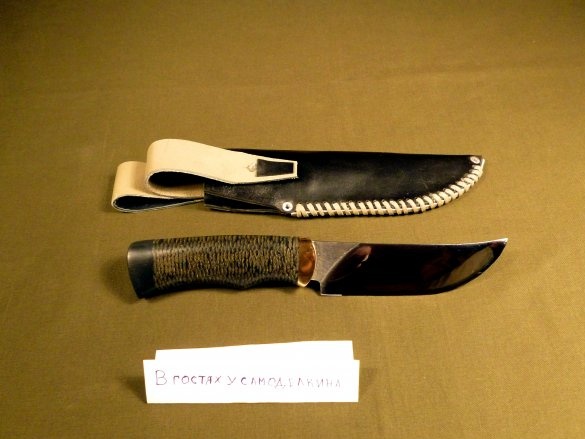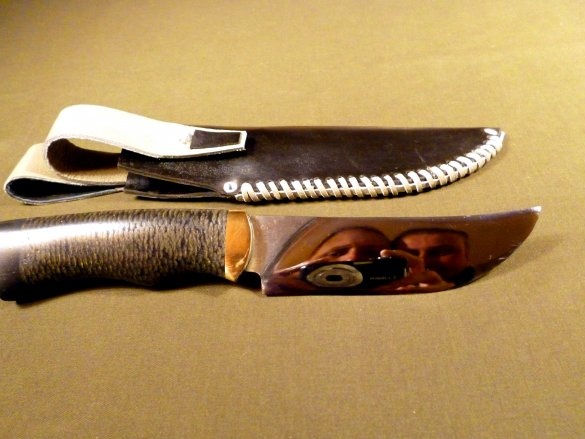Greetings to all lovers of crafting something from nothing.
I want to talk about making a knife for a fisherman I know and about my first experience in making mikarta.
A video about making a knife can be seen here.
Tools needed.
1. Welding inverter.
2. Angle grinder.
3. Sharpening machine.
4. Electric drill.
5. Vise.
6. Hacksaw for metal.
7. File.
8. Needle files.
Materials required.
1. The diesel valve.
2. Brass bar.
3. Hairpin M8.
4. Hockey puck.
5. Epoxy resin.
6. Hemp twine.
7. Carbon black.
8. Sandpaper.
9. Pasta GOI.
10. Polishing paste.
11. Cloth or felt.
12. Sheet asbestos.
Since the knife is fishing, they decided to make the blade out of stainless steel. The comrade who brought us the blank assured us that it was a diesel valve. Since there is no way to verify this, I had to take his word for it. In any case, the steel is not bad and the cut keeps excellent.
A blade template was cut out of paper, glued onto a blank and cut out with a grinder.
When working with a grinder, the workpiece was constantly cooled with water to prevent overheating.
The final shape of the blade was given on the grinding machine.
Descent from the butt made everything the same grinder. first with a grinding wheel and then with a flap wheel.
Then we cleaned the blade with sandpaper, gradually increasing the grit.
And polished on a felt circle with GOI paste.
With bolster especially did not bother. They sawed off a semicircle from a brass bar, made a slot in the center and drilled a seat for the blade shank, and of course they polished it.
A cut was made in the M8 hairpin and welded to the shank, after closing the bolster and blade with wet asbestos.
The welding seam was processed on a grinding machine.
They decided to make the top of the knife out of an old hockey puck.
Sawed off a small part.
A blind hole was drilled in the center.
They cut the thread.
And sawed off too much.
We twist the shank onto the hairpin, later we planted it on epoxy.
Now we proceed to the previously unknown, to the manufacture of mikarta by winding.
The epoxy was tinted with carbon black, simply carbon black. They took hemp twine for the skeleton.
You need to tint the main resin, add the hardener after painting.
Hemp twine was impregnated with epoxy resin.
And tightly wound on the base of the handle, holding the blade in a special vice. The work is a little dirty, but what can’t you do for the sake of experiment.
After hardening of the resin, such a nonsense turned out.
The hacksaw was cut off excess from the sides.
The shape of the handle was attached to the grinding machine.
The final fine-tuning was done with a file, files and sandpaper.
Polished with felt using polishing paste.
The output here is such a knife.
The experiment with mikarta was completely successful, although you will not want to process it with the enemy either. Most likely this is due to hemp twine, next time we’ll take simpler material, something like paper twine.
Since a knife without a scabbard is the floor of a knife, a sheath was made from an old boot, but this is a topic for a separate article.
Well, a little hello from the authors of this product.
All good and good luck in work !!!


